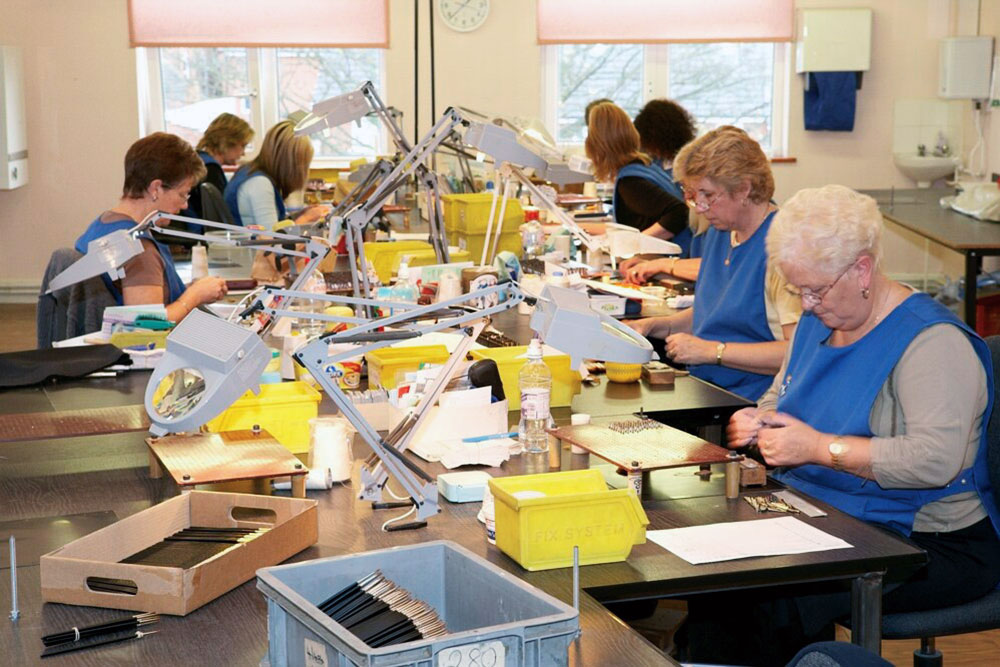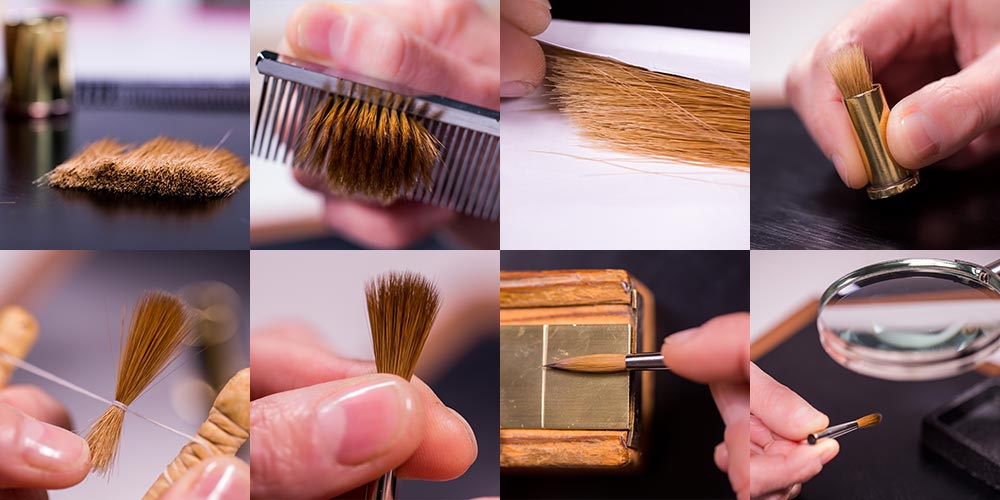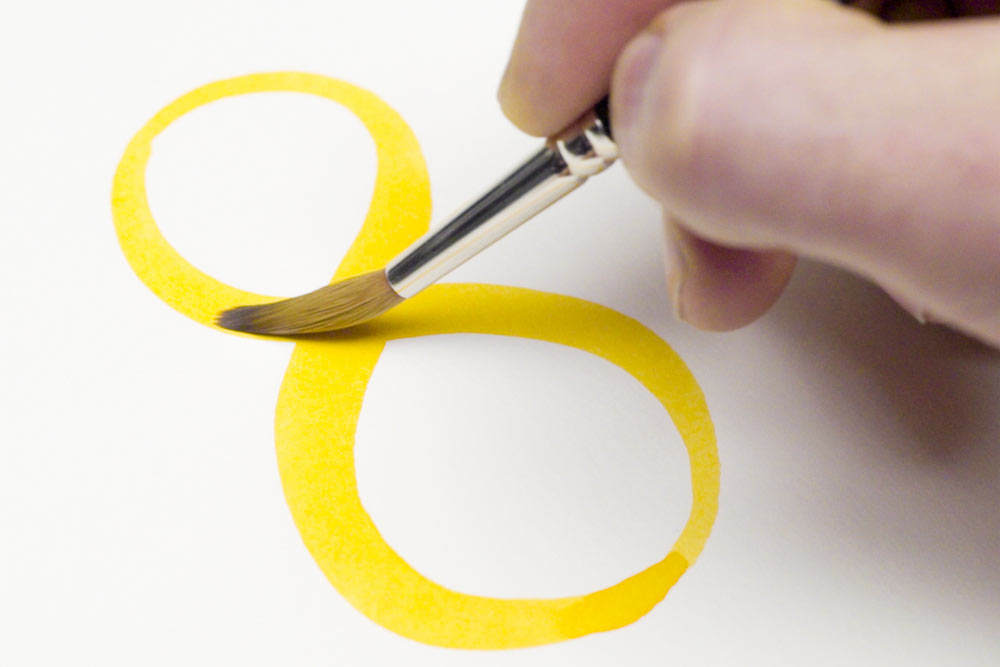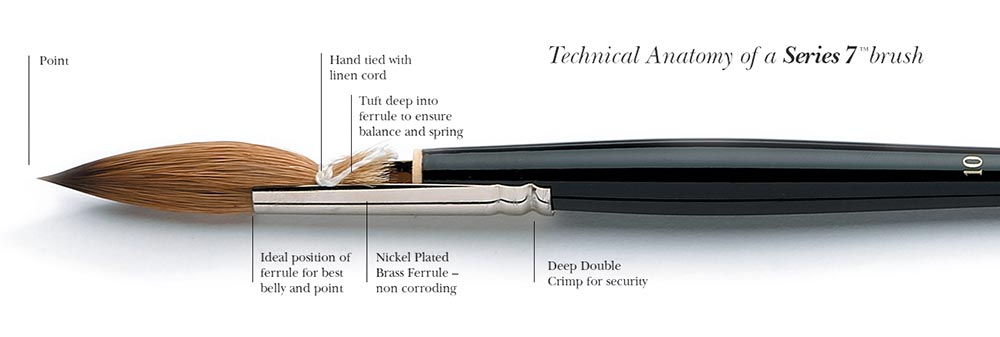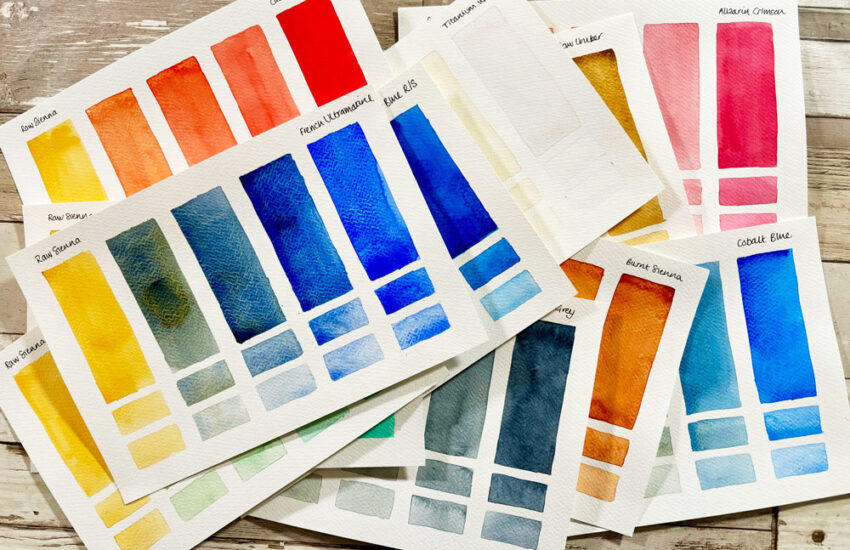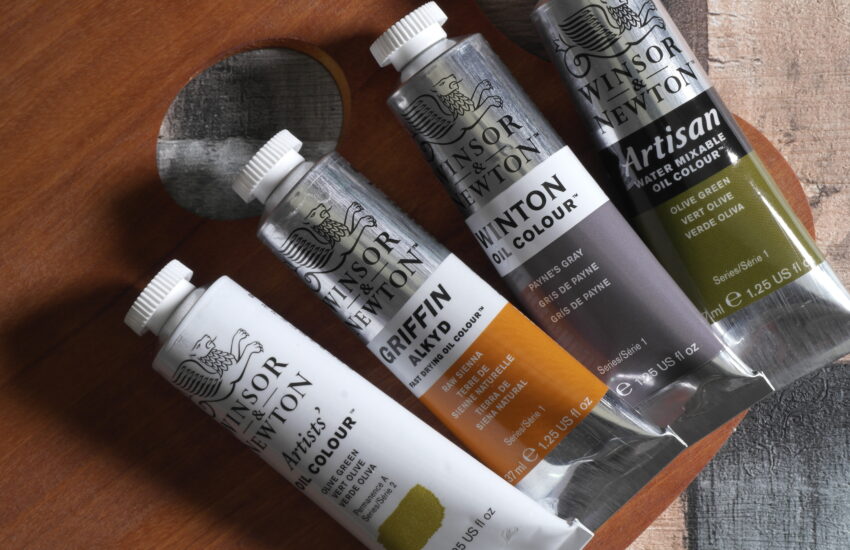Making a Series 7 Brush
Series 7 Watercolour Brushes are manufactured using time-tested brush making traditions, each brush is still made by hand in Winsor & Newton’s Lowestoft-based brush making factory. Series 7 Kolinsky Sable watercolour brushes undergo a series of continual inspections and rigorous testing during the manufacturing process to ensure that they meet the highest standards.
Generations of skill are behind the creation of a Series 7 brush – brush makers require an exacting, uncompromising eye and a good knowledge of their craft in order to select the finest materials for the job. Winsor & Newton believe this is the only way to produce a brush that measures up to not only their own high standards, but also the demands of today’s artists. Their brush production methods have remained relatively unchanged for over 100 years, and the process is still carried out by hand to prevent any damage to the brush hair.
Selection and Cleaning
The first step in creating a fine watercolour brush is to carefully select only the highest quality hair available. This process is rigorous – only the strongest hair with the most spring is selected. Just 5% off the available hair is used for these exquisite brushes. The selected hair is then carefully cleaned without the use of chemicals or detergents, and goes through processes like tumbling.
Another stage of grading takes place to remove any hairs that don’t quite have the right amount of spring. Once the hair has had its final grading a brush ‘Dresser’ will comb and separate the hairs into different lengths. The size-bundled hairs are then cleaned again, straightened and rested to preserve their valuable qualities.
When this process is finished the brush dressers will be left with bundles of different lengths of hair. Multiple lengths of hair will be used to make one size of brush – a process known as ‘taper-dressing’. Up to seven lengths can be used in this unique brush preparation, which results in a brush with a gentle taper – giving the brush its large belly and crisp point. Once the hairs have been processed they are wrapped in acid free paper and handed over to the brush makers.
Making the Brush Heads
The brush makers in the Series 7 room take the taper-dressed hair and tie the bundle together with a linen thread. The tied tuft is then skilfully and gently rolled to create the perfect ‘domed’ shape. The shape of the brush is critical to its performance so perfecting this shape is essential – if the dome is too flat or too rounded the brush tip will not point correctly. A combination of the taper-dressed hair and domed shape results in the signature elongated tip and wide belly of the Series 7. Other sable brushes are usually ‘solid’ dressed – using only a single length of hair – which results in a blunt, stubby tip offering less control and accuracy.
Assembling the brush and testing
The tied brush head is fitted and glued into a seamless nickel ferrule. It is given another inspection under a magnifying glass to get rid of any blunt or damaged hair. Once the brush maker is satisfied that any lesser quality hairs have been removed the brush handle is crimped onto place. It is then passed onto the most qualified brush makers for the final quality test – the wet point test.
Wet Point Testing
Once assembled, each Series 7 brush is hand tested in water and on watercolour paper to ensure that the brush will maintain its shape and point when in use. Wet testing requires a special level of skill and experience and is the only way to guarantee that the brush will perform as expected. If the brush passes this test the head will be lightly gummed and brush protector will be applied to prevent the tip from being damaged. Larger sized brushes will be accompanied with a small card naming the maker of the brush. The brushes are then stored carefully ready for sale.
Read our other articles about Series 7 Brushes:
The History of the Series 7 Brush
Techniques of Using and Caring for your Series 7 Brush

